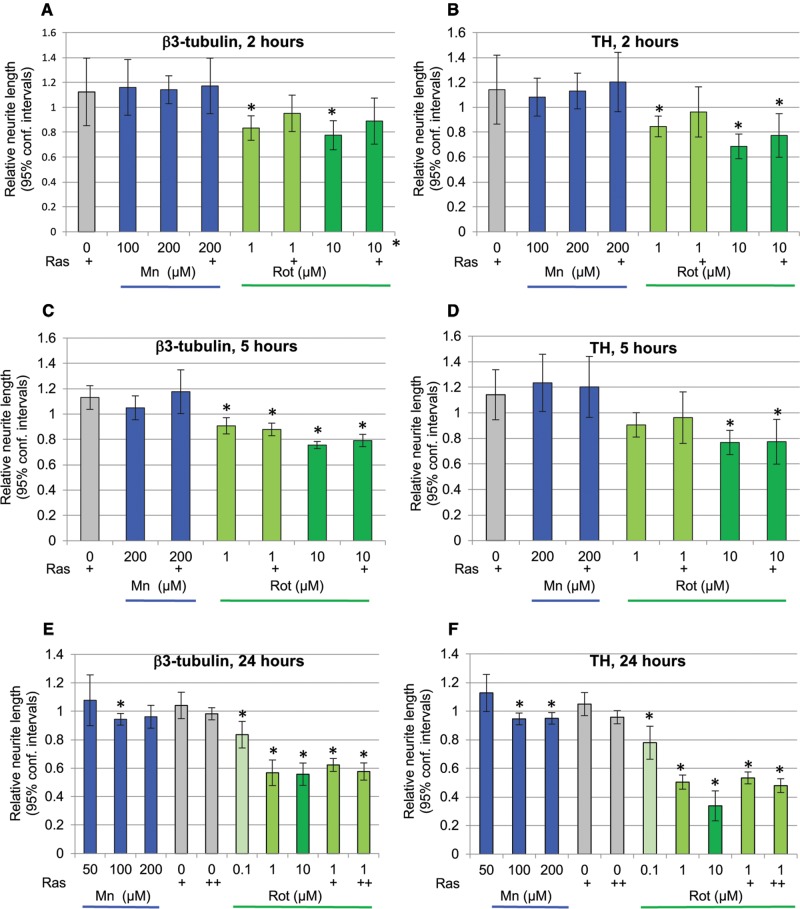Figure 6.
Rotenone, but not manganese causes loss of neurites. A and B, A 2-h exposure of days 26–27 DA neurons to rotenone (1 or 10 µM), but not manganese (100 or 200 µM) causes a significant loss of β3-tubulin and TH containing neurites. Rasagiline (+ = 10 µM) does not protect from rotenone-induced loss of β3-tubulin or TH-positive neurites (1-way ANOVA with Sidak’s multiple comparisons test). Shown are means and 95% confidence intervals, n = 3–6. C and D, A 5-h exposure of days 26–27 DA neurons to rotenone (1 or 10 µM), but not manganese (200 µM) causes a significant loss of β3-tubulin and TH containing neurites. Rasagiline (+ = 10 µM) does not protect from rotenone-induced loss of β3-tubulin or TH-positive neurites (1-way ANOVA with Sidak’s multiple comparisons test). Shown are means and 95% confidence intervals, n = 3. E and F, A 24-h exposure of days 26–27 DA neurons to rotenone (0.1–10 µM) causes a significant concentration-dependent loss of β3-tubulin-containing neurites. Rasagiline (+ = 1 µM, ++ = 10 µM) does not protect from rotenone-induced loss of β3-tubulin or TH-positive neurites (1-way ANOVA with Sidak’s multiple comparisons test). Manganese exposure for 24 h leads to a minimal loss (5%) of β3-tubulin-positive neurites at 100 µM, but not 50 or 200 µM, and a loss of TH-neurites at 100 and 200 µM. Shown are means and 95% confidence intervals, nMn = 3 and nRot, Ras = 5.

